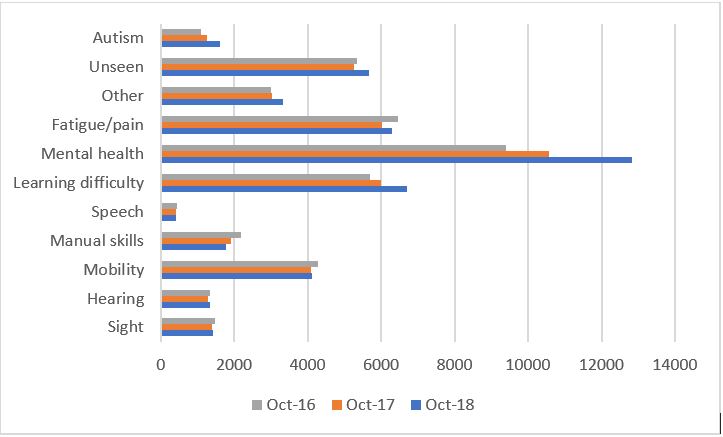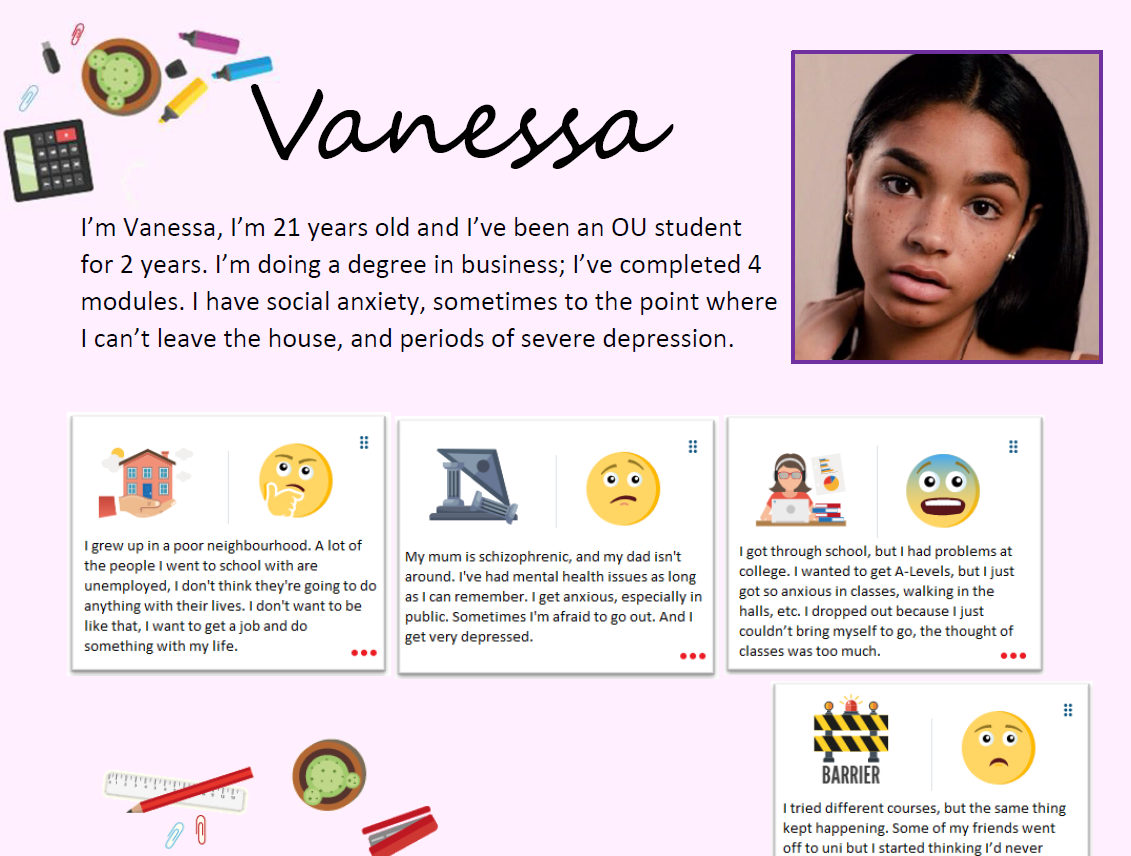Embedding mental wellbeing in the curriculum: a new approach from the Open University
How do you approach wellbeing when students aren’t in the classroom? This is the challenge for the Open University. This week’s guest blog is from Kate Lister who manages accessibility and inclusive practice at the university. She describes the new methodology they are trialling to systematically embed wellbeing by first identifying the barriers and enablers to students’ wellbeing and what interventions they can test.
At the Open University, we’re trialling a new methodology for embedding wellbeing in the curriculum. The Open University context is a bit special.
- We have extremely high numbers of students disclosing a mental health issue, nearly 13,000 in October 2018, 10% of our student cohort. It’s also our fastest growing disability category, as the graph below shows.
- As with many universities, we know we have a very high number of students who don’t disclose that they have mental health difficulties, but distance learning makes it harder to see when a student is experiencing mental health issues.
- The nature of distance learning attracts students with more severe mental health issues; for example, people who can’t attend a campus university because they are hospitalised, have agoraphobia or severe social anxiety, or people who may have had a bad experience at a campus university and want to be able to study in their home environment.
- We know that many students start studying with us to improve their mental wellbeing. This places a responsibility on us to make sure our teaching and learning meets their needs, while maintaining high academic standards.

Our approach to embedding wellbeing
We are trialling a new methodology to systematically embed wellbeing in our curricula. The first step was to identify the parts of learning and teaching that made a difference to students’ wellbeing, both in a positive and negative way (i.e. the barriers and enablers.)
We conducted interviews with students with a range of mental health issues, using narrative enquiry to identify the barriers and enablers for them. We also interviewed associate lecturers to capture their experiences of supporting students over the years, what worked and what didn’t work. Finally, we analysed the data using Thematic Analysis to identify recurrent themes.
Using the data to identify interventions
The data was extremely rich and a variety of themes emerged. As you’d expect, many related to tuition, assessment and student support, but there were also themes around technologies that helped students, examples of peer support, and themes around how students’ self-perceptions of their identify, study skills and progress had impacted on their wellbeing. This data provided a rich insight into the multi-faceted learning experience of a distance learning student and a wide range of areas in which interventions could be introduced to improve wellbeing.
Piloting projects to enhance student wellbeing
The next step was to involve the community. Using the Open University’s Journey tool, we created vignettes from our interviews (see below) and are holding a series of events with staff and students from across the university. In these events they are learning about embedding wellbeing in the curriculum, investigating the vignettes from the interview data, and are identifying ideas, interventions and projects they can pilot in their areas to enhance student wellbeing. This stage is ongoing, but ideas so far include identifying aspects of wellbeing to test for when we conduct accessibility testing, and creating guidance for students on how to study potentially distressing topics to accompany our trigger warnings.

Projects will be piloted between October and July and will be evaluated by staff and students in summer 2020. The successful ones will be scaled up and turned into business as usual. We are very excited about our participatory, community-led approach; if anyone would like to find out more, contact kate.lister@open.ac.uk.
